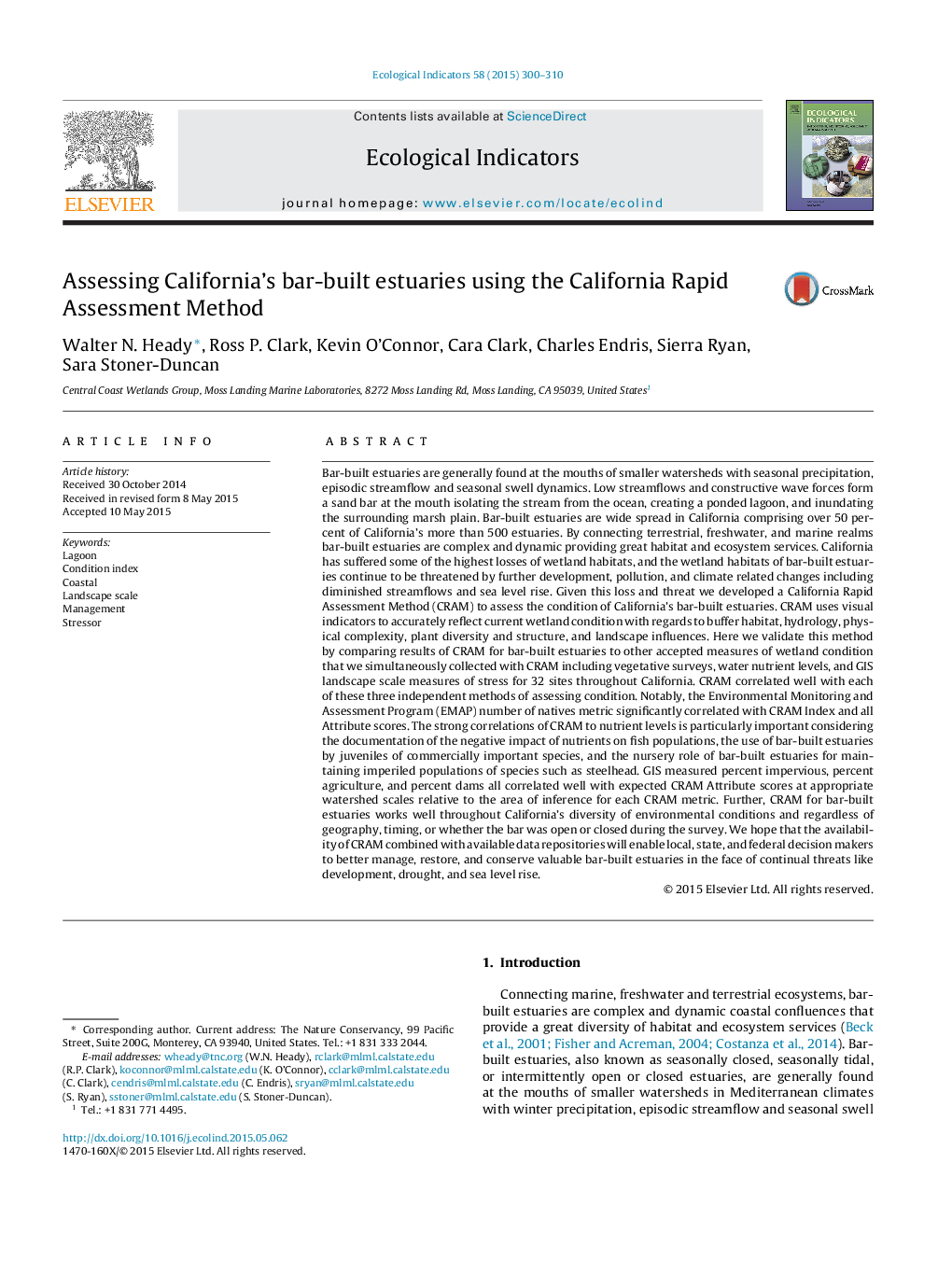| کد مقاله | کد نشریه | سال انتشار | مقاله انگلیسی | نسخه تمام متن |
|---|---|---|---|---|
| 6294272 | 1617143 | 2015 | 11 صفحه PDF | دانلود رایگان |
- Bar-built estuaries comprise over 50 percent of California's over 500 estuaries.
- California's remaining 10 percent of original wetlands face future threats.
- We validated the California Rapid Assessment Method (CRAM) for bar-built estuaries.
- CRAM correlated well with three independent assessment methods.
- CRAM is an inexpensive standardized assessment to inform restoration and conservation.
Bar-built estuaries are generally found at the mouths of smaller watersheds with seasonal precipitation, episodic streamflow and seasonal swell dynamics. Low streamflows and constructive wave forces form a sand bar at the mouth isolating the stream from the ocean, creating a ponded lagoon, and inundating the surrounding marsh plain. Bar-built estuaries are wide spread in California comprising over 50 percent of California's more than 500 estuaries. By connecting terrestrial, freshwater, and marine realms bar-built estuaries are complex and dynamic providing great habitat and ecosystem services. California has suffered some of the highest losses of wetland habitats, and the wetland habitats of bar-built estuaries continue to be threatened by further development, pollution, and climate related changes including diminished streamflows and sea level rise. Given this loss and threat we developed a California Rapid Assessment Method (CRAM) to assess the condition of California's bar-built estuaries. CRAM uses visual indicators to accurately reflect current wetland condition with regards to buffer habitat, hydrology, physical complexity, plant diversity and structure, and landscape influences. Here we validate this method by comparing results of CRAM for bar-built estuaries to other accepted measures of wetland condition that we simultaneously collected with CRAM including vegetative surveys, water nutrient levels, and GIS landscape scale measures of stress for 32 sites throughout California. CRAM correlated well with each of these three independent methods of assessing condition. Notably, the Environmental Monitoring and Assessment Program (EMAP) number of natives metric significantly correlated with CRAM Index and all Attribute scores. The strong correlations of CRAM to nutrient levels is particularly important considering the documentation of the negative impact of nutrients on fish populations, the use of bar-built estuaries by juveniles of commercially important species, and the nursery role of bar-built estuaries for maintaining imperiled populations of species such as steelhead. GIS measured percent impervious, percent agriculture, and percent dams all correlated well with expected CRAM Attribute scores at appropriate watershed scales relative to the area of inference for each CRAM metric. Further, CRAM for bar-built estuaries works well throughout California's diversity of environmental conditions and regardless of geography, timing, or whether the bar was open or closed during the survey. We hope that the availability of CRAM combined with available data repositories will enable local, state, and federal decision makers to better manage, restore, and conserve valuable bar-built estuaries in the face of continual threats like development, drought, and sea level rise.
Journal: Ecological Indicators - Volume 58, November 2015, Pages 300-310
